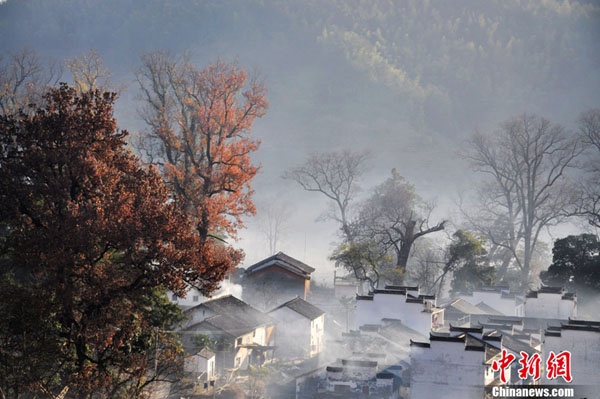 |
|
Beautiful winter scenery of Shicheng village, Wuyuan county, East China's Jiangxi province. |
As traditional villages are scattered all over the country, their preservation is more difficult than the protection of the Imperial Palace, according to Lou Qingxi, professor of Chinese ancient architecture at Tsinghua University.
Rich in cultural heritage, the traditional villages are considered the root of Chinese culture and the soul of the Chinese nation, but the dire reality is that they are vanishing at a faster pace than ever before, and at the same time, the lack of funding makes their protection even more difficult.
Liang Hongsheng, a professor from Jiangxi Normal University, is dedicated to the development and preservation of ancient villages and townships in southern China. He has travelled all over the cities and counties within the Jiangxi province in the past 25 years.
From what he has seen, he lamented the fact that the ancient villages of Anyi in Nanchang city, listed as the first batch of famous historical and cultural villages in China, should have been better preserved, but many wooden houses have rotted away due to lack of funding. Without effective protection measures, the villages will soon die out.
In China, more ancient villages remain in the underdeveloped regions because of less exploitation, but local governments there can spare little money on protection.
For those inscribed on the national list of traditional Chinese villages, each receives a subsidy of three million yuan, an amount that is far from enough to bear the cost of maintenance and renovation of the ancient architecture.